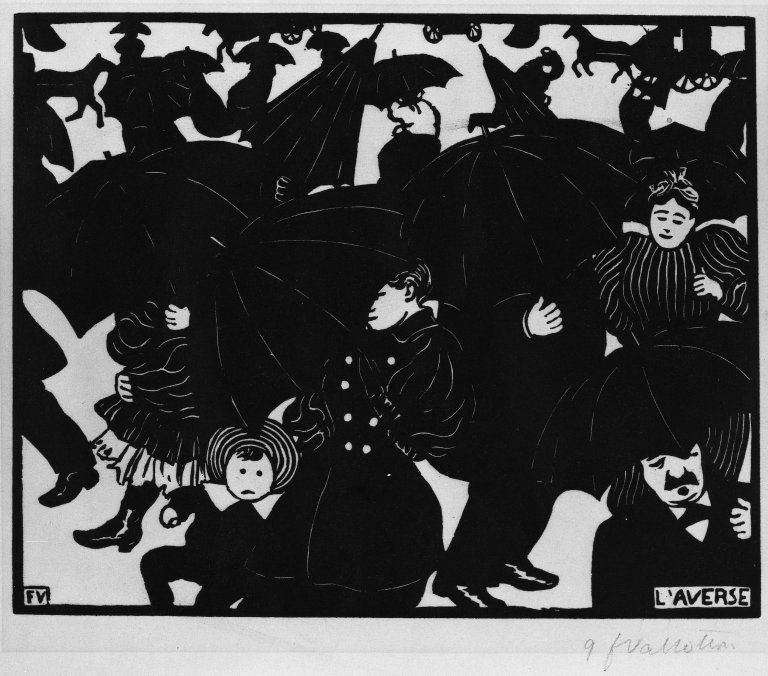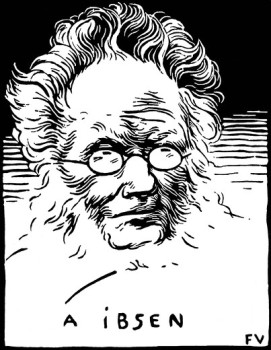Felix greatly admired the works of Holbein, Dürer and Ingres; these artists would remain exemplars for Vallotton throughout his life. In 1891 he executed his first woodcut, a portrait of Paul Verlaine. The many woodcuts he produced during the 1890s were recognized as innovative, and established Vallotton as a leader in the revival of true woodcut as an artistic medium. In the western world, the relief print, in the form of commercial wood engraving, had long been utilized mainly as a means to accurately reproduce drawn or painted images and, latterly, photographs. Vallotton's woodcut style was novel in its starkly reductive opposition of large masses of undifferentiated black and areas of unmodulated white. Vallotton emphasized outline and flat patterns, and generally eliminated the gradations and modeling traditionally produced by hatching. He was influenced by post-Impressionism, Symbolism, and especially by the Japanese woodcut: a large exhibition of ukiyo-e prints had been presented at the École des Beaux-Arts in 1890, and Vallotton, like many artists of his era an enthusiast of Japonism, collected these prints.

La raison probante (The Cogent Reason), a woodcut from the series Intimités, 1898
By 1892 he was affiliated with Les Nabis, a group of young artists that included Pierre Bonnard, Ker-Xavier Roussel, Maurice Denis, and Édouard Vuillard, with whom Vallotton was to form a lifelong friendship. During the 1890s, when Vallotton was closely allied with the avant-garde, his paintings reflected the style of his woodcuts, with flat areas of color, hard edges, and simplification of detail. His subjects included genre scenes, portraits and nudes. Examples of his Nabi style are the deliberately awkward Bathers on a Summer Evening (1892–93), now in the Kunsthaus Zürich, and the symbolist Moonlight (1895), in the Musée d'Orsay.
Now what I enjoy is his use of simultaneous contrast. He is a master of leading your eye from white shape to white shape through large expanses of black that never give up the shape of the objects they are depicting. He gets so much bang for his buck with so little expense. See what you think...
Now this is the end of my sampling from Felix Valloton. I hope you enjoyed him!
~ Chris
For more of about that quirky illustrator from Salem and his books, go back and hit the blue highlighted text.Yes, now! Go on do it. I dare you.











No comments:
Post a Comment